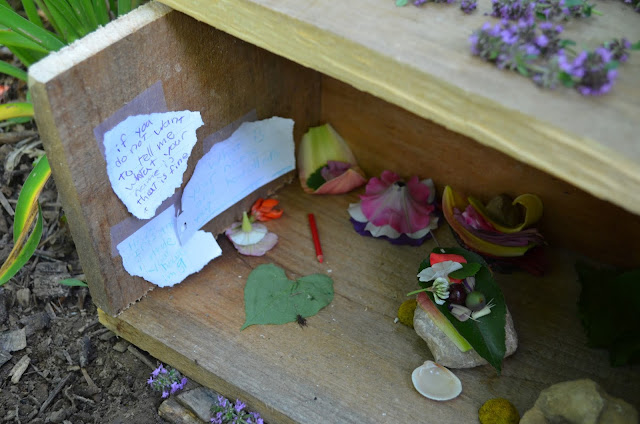I remember so many forts from my childhood. Some were intricate and detailed, like the three-story tree house my dad built with me. Some were cooperative efforts with friends, like the forts and tunnels built from hay bales in the barn. And some were just simple solo spaces carved out in the shade and moss in the prickly-ash thicket. But all were treasured spaces, free from adult-imposed rules, full of promise and peace. I could spend hours there, reading, planning, day dreaming, and observing nature happening around me. In these hidden away dens I grew my love of the outdoors and my comfort in spending time alone.
In today's world of over-scheduled time and media's strong influence our children need secret spaces more than ever. When children are given the freedom to build forts, or tiny towns or mud kitchens they are learning valuable skills. They make their own rules and gain confidence while problem solving. They use analytic skills to determine what kinds of construction will work, how much planning is needed and they test their patience time and again.
In these private spaces they can connect with nature in ways that allow their bodies and minds to de-stress. Their breathing can slow and their hearts and minds can fill with wonder. Questions arise that they find the answers to all on their own.
 In these magical places they can use their creativity to harness nature's beauty for art, for pleasure, for function or fun. Their imaginations can take off, un-cluttered by expectations or outside influence. The world within these secret spaces is private and independent. Here our children can slowly process and integrate new information while cultivating the skills they need to function in an ever-busy world.
In these magical places they can use their creativity to harness nature's beauty for art, for pleasure, for function or fun. Their imaginations can take off, un-cluttered by expectations or outside influence. The world within these secret spaces is private and independent. Here our children can slowly process and integrate new information while cultivating the skills they need to function in an ever-busy world.In this world that has gone a little strange on us all, perhaps it's our job now more than ever to provide our children with time to build their secret places. With nature's solid presence all around them our children can construct, create and explore spaces that feel safe and protected. Here, in nature, we know their worries are soothed, their bodies relax, and positive feelings increase. Here in their secret spaces, the adults of our future learn to care for themselves and their world.










